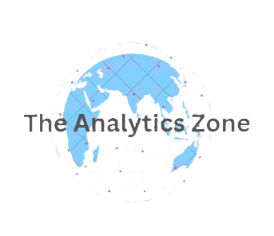
Machine Learning vs Artificial Intelligence: Key Differences
In today’s fast-paced technological world, Machine Learning (ML) and Artificial Intelligence (AI) are two of the most discussed topics. While they are often mentioned together, they represent distinct concepts. Understanding the key differences between these technologies is crucial for anyone interested in how they are shaping our future. In this article, we’ll break down what Machine Learning and Artificial Intelligence are, how they differ, and their applications in various industries.
1. What is Machine Learning?
Machine Learning is a subset of Artificial Intelligence focused on enabling computers to learn from data without explicit programming. In simple terms, ML uses algorithms to analyze data, recognize patterns, and make decisions based on previous experiences.
Key Features of Machine Learning:
- Data-driven: ML relies on vast datasets to train models that improve over time.
- Pattern Recognition: The system identifies trends in data to predict future outcomes.
- Automation: ML automates tasks that would normally require human intervention.
There are three main types of Machine Learning:
- Supervised Learning: The system is trained on labeled data, learning to predict outcomes for new data.
- Unsupervised Learning: The system finds patterns in data without prior labels.
- Reinforcement Learning: The system learns by interacting with its environment and receiving feedback through rewards or penalties.
2. What is Artificial Intelligence?
Artificial Intelligence is the broader concept of machines mimicking human intelligence to perform tasks such as reasoning, learning, and problem-solving. While ML is a subset of AI, AI encompasses more advanced techniques designed to enable machines to think and act autonomously.
Key Aspects of Artificial Intelligence:
- Problem Solving: AI systems can analyze complex problems and find solutions faster than humans.
- Natural Language Processing (NLP): AI understands and processes human language, enabling chatbots and virtual assistants.
- Cognitive Functioning: AI replicates human-like thinking, including decision-making, learning, and reasoning.
AI includes a variety of methods, such as Machine Learning, neural networks, and expert systems, all working together to create smarter, more efficient machines.
3. Key Differences Between Machine Learning and Artificial Intelligence
While Machine Learning and Artificial Intelligence are interconnected, they have important differences:
- Scope: AI is the broader field that aims to simulate human intelligence, whereas Machine Learning is a specific approach used to achieve this by learning from data.
- Functionality: AI encompasses various techniques beyond ML, including robotics and expert systems, while ML is strictly focused on data-driven decision-making.
- Objective: The goal of AI is to create systems that mimic human intelligence, while ML aims to improve performance over time through data and experiences.
4. Applications of Machine Learning and Artificial Intelligence
Both Machine Learning and Artificial Intelligence are already transforming industries. Here are some ways these technologies are applied today:
- Healthcare: AI and ML are used to predict patient outcomes, assist in diagnosing diseases, and personalize treatment plans.
- Finance: AI analyzes financial data for fraud detection, risk management, and predictive trading, while ML optimizes decision-making based on historical data.
- Transportation: AI powers autonomous vehicles, helping them make decisions based on real-time data, while ML continuously improves their performance.
- Retail: ML algorithms recommend products based on user behavior, improving the customer experience.
- Customer Service: AI chatbots and virtual assistants use Natural Language Processing (NLP) to understand and respond to customer queries in real-time.
5. Machine Learning and Artificial Intelligence in the Future
The future of Machine Learning and Artificial Intelligence is incredibly promising. Here are some key predictions:
- Automation: AI and ML will automate more processes across industries, leading to higher efficiency and fewer human errors.
- Personalization: These technologies will enable businesses to offer hyper-personalized experiences to consumers, improving customer engagement.
- Enhanced Decision Making: Machine Learning will allow businesses to make smarter decisions by uncovering hidden insights in large datasets.
- AI Ethics: As AI continues to evolve, concerns around ethics, privacy, and bias in algorithms will become even more critical.
6. A Powerful Combination of Machine Learning and AI
To summarize, Machine Learning and Artificial Intelligence are powerful technologies that are shaping the future of industries worldwide. While Machine Learning is a critical tool within AI, helping systems improve based on data, Artificial Intelligence focuses on creating machines that replicate human intelligence. Together, these technologies are revolutionizing the way businesses operate, making systems smarter and more efficient.
As these technologies continue to evolve, they will unlock even greater possibilities. Whether you’re pursuing a career in AI or ML, or simply looking to understand their impact, these fields are poised to transform the world as we know it.
Follow Us for More Updates
Stay up-to-date with the latest in tech, trends, and innovations by following us on our social media channels:
- Instagram: @theanalyticszone
- Twitter: @The analytics zone
We love hearing from our readers! Don’t forget to share your thoughts, comments, and suggestions.

Leave a Reply